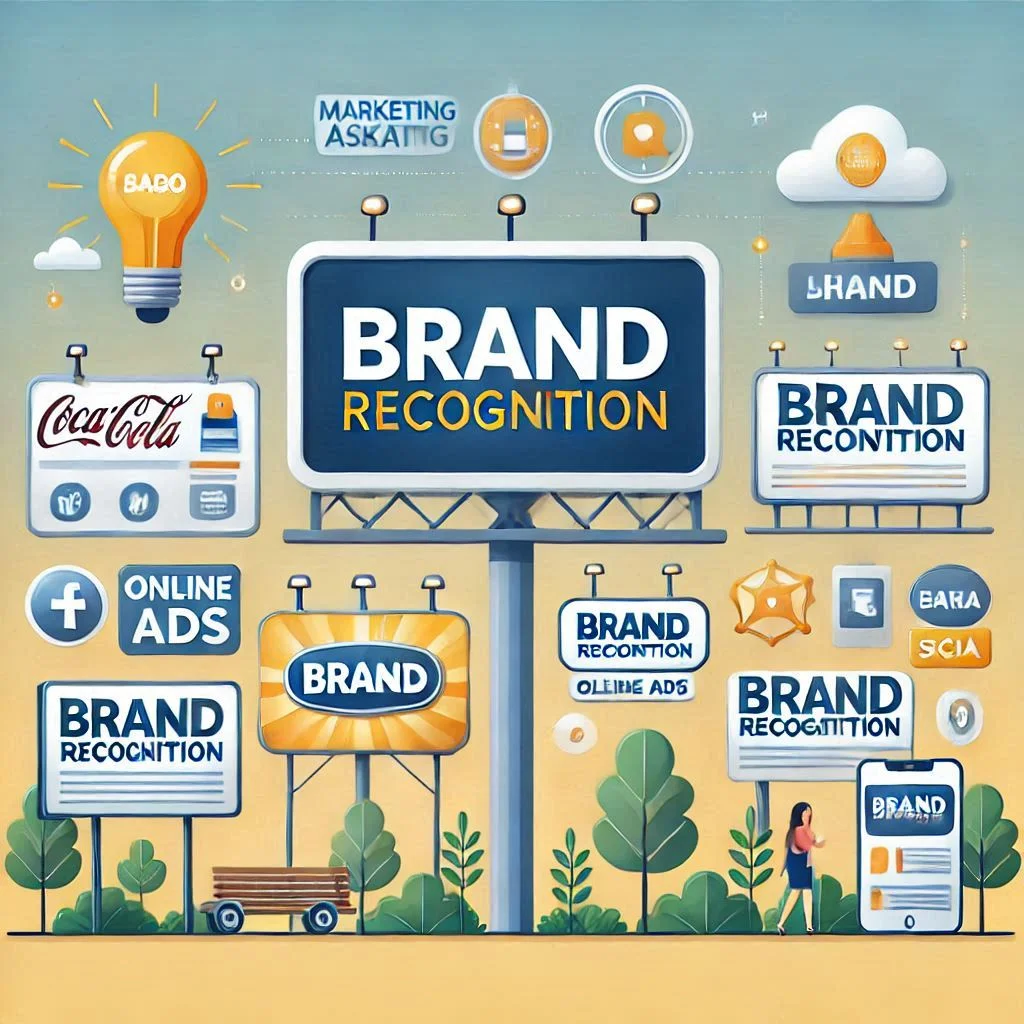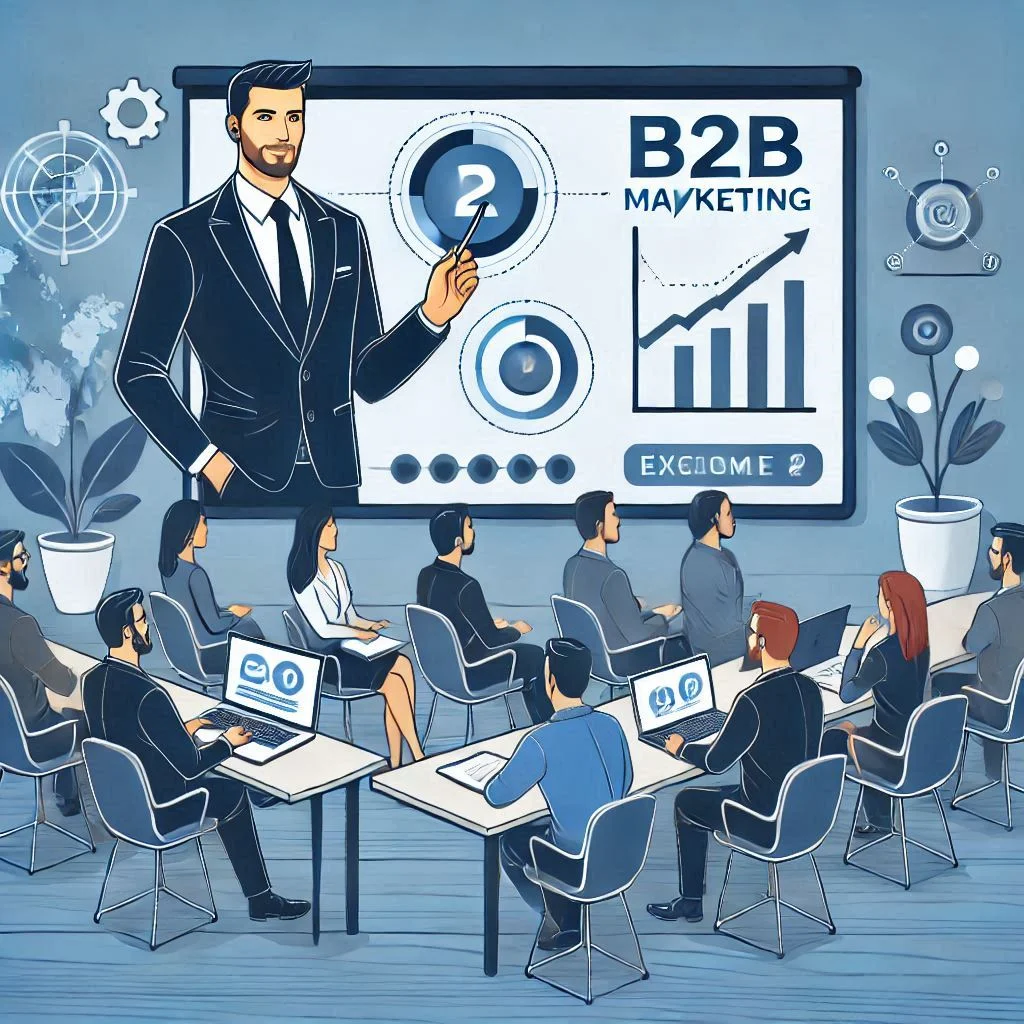Understanding Marketing and Its Purpose
What Is Marketing?
Marketing is a broad and dynamic concept that encompasses various activities aimed at promoting a brand or product to potential customers. It involves the identification of target audiences, creating compelling campaigns, and using various platforms to build brand awareness, generate leads, and drive sales. The ultimate goal of marketing is to fulfill the needs of consumers while helping businesses achieve their objectives.
Definition and Concept
Marketing can be defined as the action or business of promoting and selling products or services, including market research and advertising. It is not limited to sales alone; it includes understanding market needs, developing products or services that fulfill those needs, and establishing strong customer relationships. This is accomplished through an integration of strategies that may include advertising, digital content, social media, influencer collaborations, and more.

Key Takeaways
- Strategic Planning: Marketing involves careful planning to align business goals with market demands.
- Audience-Centric: The focus of marketing is on understanding and catering to the needs and preferences of the target audience.
- Multi-Channel Approach: Modern marketing leverages multiple channels including social media, email, and traditional advertising.
- Continuous Adaptation: Marketing strategies must be flexible to respond to market trends and consumer behaviors.
Why Is Marketing Important?
Marketing is crucial for any business aiming for growth and sustainability. It’s not just about promoting products; it’s about creating connections, fostering loyalty, and understanding the changing needs of consumers. Here are some specific ways in which marketing contributes to a company’s success:
Builds Brand Loyalty and Customer Relationships
Marketing plays a pivotal role in establishing trust and loyalty among customers. Through consistent branding, personalized experiences, and engaging communication, businesses can build strong relationships that encourage repeat business. Strategies such as loyalty programs, customer service excellence, and follow-up interactions help nurture lasting relationships.

Guides Smart Pricing Decisions
Marketing insights, such as market analysis and consumer behavior data, help businesses determine the optimal pricing for their products or services. Through competitor analysis and understanding customer value perceptions, marketing provides actionable data that informs pricing strategies that attract customers while maximizing profit margins.
Helps Understand Customer Behavior
An in-depth understanding of customer behavior is essential for crafting effective marketing strategies. Marketing research methods, such as surveys, focus groups, and analytics tools, provide valuable insights into consumer needs, preferences, and buying patterns. This information enables businesses to tailor their marketing messages and product offerings.
Creates Brand Recognition
Building brand recognition is one of the fundamental purposes of marketing. Strong marketing campaigns create a positive image and increase the visibility of a brand. The more consumers see and recognize a brand, the more likely they are to trust it and choose it over competitors. This can be achieved through consistent messaging, eye-catching design, and strategic brand placements across various channels.

Sells the Experience and JTBDs (Jobs To Be Done)
Marketing is not just about promoting products; it’s about showcasing how a product or service solves a problem or fulfills a need. The Jobs To Be Done (JTBD) framework helps marketers understand the functional and emotional jobs that customers want to accomplish. Effective marketing communicates how a brand or product can make the customer’s life easier, more enjoyable, or more successful.
Provides a Competitive Edge
Marketing strategies are a powerful tool for gaining a competitive advantage. By understanding market trends, consumer behavior, and the competitive landscape, companies can position themselves uniquely. Differentiating their offerings through unique value propositions, exceptional service, and effective communication helps businesses stand out from the crowd.

The Different Types of MarketingMarketing is a multifaceted discipline that has evolved significantly over the years to meet the changing needs of consumers and advancements in technology. Different types of marketing strategies can be employed by businesses to reach their target audience and drive growth. These can be broadly categorized into traditional marketing, digital marketing, and newer approaches like neuromarketing.
Traditional Marketing
Traditional marketing encompasses older methods that have been used for decades and remain effective in certain contexts. It involves direct forms of communication and tangible media, reaching audiences through physical and non-digital means.
Print Marketing
Print marketing is one of the most conventional forms of marketing, involving physical materials such as brochures, flyers, newspapers, and magazines. Despite the rise of digital media, print marketing remains impactful due to its tangibility and ability to leave a lasting impression. Effective print marketing strategies often involve high-quality visuals, clear calls to action, and targeted distribution to ensure the materials reach the intended audience.

Broadcast Marketing
Broadcast marketing uses television and radio to reach a broad audience. It’s a powerful way to share information and promotions across a wide demographic, leveraging the strong visual and auditory impact of these media. Broadcast ads are usually short but memorable, designed to convey a brand message quickly and effectively. This type of marketing is best suited for products with mass appeal and strong brand awareness goals.
Telemarketing
Telemarketing involves using phone calls to directly engage potential customers. This form of marketing can be highly effective for certain products or services where personalized interaction is valuable. However, it requires skilled professionals who can maintain a persuasive yet respectful approach. While telemarketing has faced criticism for being intrusive, it remains effective for B2B transactions and certain service industries.
Digital Marketing
Digital marketing has emerged as a dominant strategy in modern business, leveraging the power of the internet and digital technology to reach consumers effectively. It provides businesses with numerous opportunities to interact with customers and measure campaign performance.
Search Engine Optimization (SEO)
SEO is the process of optimizing a website and its content to rank higher in search engine results pages (SERPs). This method enhances organic (non-paid) traffic to a site and is crucial for online visibility. SEO practices include optimizing website content, using relevant keywords, ensuring fast loading speeds, and building high-quality backlinks. Proper SEO strategies increase the chances of appearing at the top of search results, leading to greater engagement and traffic.
Blog Marketing
Blog marketing involves creating valuable content that engages readers and enhances the brand’s reputation. Blogs improve search engine rankings by targeting specific keywords and offering relevant information. Businesses can use blogs to educate potential customers, showcase their expertise, and drive traffic to their websites. Quality blog content should be informative, optimized for search engines, and aligned with user intent.
Social Media Marketing
Social media marketing leverages platforms like Facebook, Instagram, Twitter, and LinkedIn to promote products, engage with customers, and increase brand awareness. It is a versatile form of marketing, allowing for various types of content including posts, stories, live videos, and ads. Success in social media marketing depends on understanding the platform’s audience, creating shareable content, and maintaining consistent brand messaging.

Search Engine Marketing (SEM)
SEM is a paid marketing strategy that aims to increase a website’s visibility in search engine results through paid ads. It often involves the use of pay-per-click (PPC) advertising, where businesses pay for their ads to appear at the top of search results when users type in specific keywords. SEM campaigns can be highly targeted and provide quick results compared to SEO.
Video Marketing
Video marketing is a powerful way to engage with audiences using multimedia. It can take the form of explainer videos, advertisements, social media posts, webinars, and tutorials. Videos are shareable and can convey complex information more effectively than text or images alone. Platforms like YouTube, TikTok, and Instagram make video marketing highly versatile and accessible for businesses of all sizes.
Neuromarketing
Neuromarketing is an innovative approach that combines marketing strategies with neuroscience. It involves studying consumer behavior through the use of brain-scanning technology and other methods to understand how customers respond to marketing stimuli. This data-driven approach helps marketers design campaigns that evoke emotional and psychological responses, leading to better engagement and higher conversion rates. Neuromarketing can provide deep insights into customer preferences, decision-making processes, and overall brand perception.

Where Is Marketing Used?Marketing is an essential function across various industries and business models. It plays a pivotal role in connecting products and services to consumers, building brand awareness, and driving sales. Understanding where marketing is used can provide insights into its versatility and application in different contexts. Below, we explore how marketing is used in various industries, for small businesses, and the distinctions between B2B, B2C, C2B, and C2C marketing.
Marketing in Different Industries
Marketing is not limited to a single sector; it is used across various industries to meet specific goals. Whether in sales, services, website promotion, or customer retention, marketing strategies are customized to fit the unique needs of each industry.
Marketing in Sales
In the sales industry, marketing is used to create leads, nurture prospects, and close deals. Effective marketing strategies help identify target audiences and create compelling value propositions that make products or services appealing to potential buyers. This can include digital campaigns, sales funnels, webinars, and product demonstrations. The goal is to guide prospects through the buying journey from awareness to consideration and finally to purchase.

Marketing in Services
Service-based businesses use marketing to showcase the value of their offerings, differentiate themselves from competitors, and build trust with potential customers. Content marketing, client testimonials, and case studies are often employed to demonstrate expertise and reliability. Additionally, targeted campaigns and personalized email marketing are used to maintain long-term relationships with clients.

Marketing for Websites
Website marketing focuses on driving traffic and converting visitors into customers. This involves SEO strategies, blog content, and call-to-action buttons that guide users through a seamless experience. With the right digital marketing techniques, businesses can enhance their website’s visibility and engagement, boosting their chances of converting visitors into paying customers.

Marketing for Customer Retention
Customer retention marketing strategies are essential for maintaining relationships with existing customers and ensuring repeat business. This can include loyalty programs, personalized emails, follow-up surveys, and exclusive promotions. Retention-focused marketing aims to provide value that keeps customers engaged and satisfied over the long term.

Marketing in Small Businesses
Small businesses often face unique challenges due to limited resources and competition from larger enterprises. However, strategic marketing can help small businesses carve out a niche and build brand loyalty.
Digital Marketing Strategies for Small Businesses
Digital marketing is an accessible and cost-effective way for small businesses to reach their target market. Utilizing social media platforms, SEO, content marketing, and email campaigns allows small businesses to enhance their visibility without the high costs associated with traditional advertising. Building an online presence through a well-maintained website and active social media profiles is crucial for small businesses aiming to expand their reach.

The Role of Marketing in B2B and B2C
Marketing strategies vary greatly between B2B (business-to-business) and B2C (business-to-consumer) models due to the differing nature of the audiences and sales cycles. Understanding the key differences is crucial for tailoring marketing efforts to each type of business.
B2B Marketing
B2B marketing focuses on selling products or services to other businesses rather than individual consumers. Strategies for B2B marketing often include relationship-building through networking, personalized email marketing, webinars, and whitepapers. The sales cycle in B2B is longer and involves multiple stakeholders, requiring a more detailed and consultative approach.

B2C Marketing
B2C marketing targets individual consumers and focuses on quick, impactful interactions. B2C strategies include social media ads, influencer marketing, product promotions, and interactive content to capture attention. The key is to create a sense of urgency and highlight the benefits of products or services in a simple, direct way.

C2B Marketing
C2B (consumer-to-business) marketing is a model where consumers offer products or services to businesses. This can include freelance work, user-generated content, and feedback. Platforms like Fiverr and Upwork facilitate this type of interaction, allowing individuals to leverage their skills and services for companies that need them.
C2C Marketing
C2C (consumer-to-consumer) marketing is exemplified by platforms such as eBay and Craigslist, where individuals buy and sell products directly to each other. This type of marketing relies on trust between users and effective online platforms that facilitate transactions.
Differences Between B2B and B2C Marketing
While both B2B and B2C marketing aims to drive sales and engagement, they differ in approach. B2B marketing typically requires more in-depth research, longer sales cycles, and targeted, relationship-focused strategies. In contrast, B2C marketing often emphasizes emotion-driven marketing, faster transactions, and broader audience reach.

Marketing Strategies and ChannelsMarketing strategies and channels are essential to a brand’s success. Whether a business is using digital, traditional, or neuromarketing techniques, choosing the right strategy and channels can make a significant impact on reaching target audiences and achieving business objectives. This section covers the three pillar types of marketing strategies—digital, traditional, and neuromarketing—and how they can be effectively implemented.
3 Pillar Types of Marketing
Marketing strategies can be categorized into three main pillars: digital marketing, traditional marketing, and neuromarketing. Each type has unique methods and channels, catering to different audience needs and business goals.
Digital Marketing Strategies
Digital marketing leverages the internet and electronic devices to promote products or services. It’s a cost-effective and measurable approach that enables brands to reach a global audience. The following are key components of digital marketing strategies:
- Search Engine Optimization (SEO): Optimizing content so it ranks highly in search engines like Google. This involves keyword research, on-page SEO (e.g., meta tags, headings, and content structure), and off-page SEO (e.g., backlinks and social signals).
- Content Marketing: Creating and sharing valuable content, such as blog posts, infographics, videos, and eBooks, to attract and engage an audience. The content must be informative, relevant, and tailored to the audience’s interests.
- Social Media Marketing: Using platforms like Facebook, Instagram, Twitter, and LinkedIn to engage with the audience, share updates, and run targeted ads. Social media marketing helps build brand awareness and customer loyalty.
- Email Marketing: Sending personalized emails to nurture leads and build customer relationships. Automated email campaigns can include welcome emails, newsletters, and promotional offers.
- Pay-Per-Click (PPC) Advertising: Running ads on search engines or social media where businesses pay a fee each time their ad is clicked. PPC campaigns can be highly targeted and drive immediate traffic.
- Video Marketing: Creating engaging video content to reach audiences through YouTube, TikTok, and social media. Videos are more engaging and often have higher retention rates compared to other types of content.

Traditional Marketing Strategies
Traditional marketing encompasses traditional methods that have been used for decades. Although it’s more costly and sometimes less measurable than digital marketing, it can still be highly effective for certain audiences and industries. Key traditional marketing strategies include:
- Print Marketing: Utilizing printed materials like brochures, flyers, newspapers, and magazines to promote products or services. Print marketing provides tangible value and can reach targeted demographics.
- Broadcast Marketing: Advertising through television and radio ads. This method can provide extensive reach and build brand awareness over a broad audience.
- Telemarketing: Reaching out to potential customers over the phone. It can be highly personalized and effective for generating leads, but requires skilled salespeople for success.
- Outdoor Advertising: Using billboards, transit ads, and posters in high-traffic areas to increase brand visibility. This type of advertising is especially effective for local businesses and events.
- Direct Mail: Sending physical mail, such as postcards or catalogs, to a targeted audience. While direct mail can be costly, it often yields high response rates due to its personal touch.

Neuromarketing Strategies
Neuromarketing applies neuroscience principles to understand consumer behavior and decision-making processes. It’s a relatively newer approach but offers profound insights into how customers respond to different marketing stimuli. Key neuromarketing strategies include:
- Eye-Tracking Technology: Studying where customers look when exposed to ads, product packaging, or web pages. Eye-tracking helps identify which elements capture attention and drive engagement.
- Brain Imaging: Using techniques like fMRI to observe brain activity and measure emotional responses to marketing stimuli. This provides data on how consumers react to different aspects of marketing campaigns.
- Emotional Analysis: Using facial recognition software and biometric sensors to track emotional responses such as happiness, surprise, and interest. This helps tailor marketing content to trigger positive reactions.
- A/B Testing with Neuroscience: Testing different versions of a marketing message, ad, or product design to see which version produces the most positive emotional response and drives better decision-making.

The Benefits and Limitations of MarketingUnderstanding the benefits and limitations of marketing is crucial for businesses looking to create effective campaigns and avoid common pitfalls. This section explores the advantages marketing brings to a company and the challenges it may pose during implementation.
Benefits of Marketing
Effective marketing strategies can yield significant benefits that impact a business’s growth, brand image, and customer loyalty. Here are the primary benefits of marketing:
Establishes Brand Recognition
Marketing helps businesses create and promote their brand identity. Consistent marketing efforts, whether through advertising, social media, or public relations, lead to brand recognition. When consumers see a company’s logo, name, or message repeatedly, they are more likely to associate it with trust, reliability, and quality. This recognition fosters a sense of familiarity and influences purchasing decisions.

Enhances Customer Relationships
Marketing goes beyond the initial sale and establishes a long-term relationship with customers. Strategies such as personalized email marketing, loyalty programs, and social media engagement help businesses maintain an ongoing dialogue with their audience. This fosters trust, encourages repeat business, and turns one-time buyers into loyal customers. Brands that engage meaningfully with their customers can benefit from positive word-of-mouth promotion and brand advocacy.

Supports Competitive Advantage
Marketing enables a company to differentiate itself from its competitors. By showcasing unique selling points (USPs), highlighting product features, and creating a compelling brand story, businesses can carve out a niche in the market. Well-executed marketing strategies help businesses stand out, attract more customers, and maintain a strong position in the market. This competitive edge is critical for long-term growth and sustainability.

Limitations of Marketing
While marketing offers numerous benefits, it also comes with inherent limitations that businesses need to be aware of to minimize risks and maximize returns.
Challenges and Obstacles in Implementing Marketing Strategies
Implementing marketing strategies can come with challenges that impact their effectiveness. Below are some of the main obstacles businesses may face:
- High Costs: Marketing campaigns can be expensive, especially for small businesses with limited budgets. This can include costs for paid advertising, creative production, and marketing software tools. Companies need to allocate resources wisely and monitor return on investment (ROI) to avoid financial strain.
- Complexity in Measuring ROI: One of the major limitations of marketing is accurately measuring its impact. While digital marketing tools provide various metrics and analytics, calculating the true ROI can still be challenging, especially when multiple channels are involved. Marketing strategies often have long-term effects that are difficult to quantify in immediate terms.
- Market Saturation: In highly competitive markets, marketing messages can become diluted due to the sheer volume of advertisements consumers are exposed to. Standing out in such environments requires creativity, strategic targeting, and an understanding of consumer behavior.
- Rapid Changes in Trends: The fast-paced nature of digital marketing means that strategies can become obsolete quickly. Staying up-to-date with new trends, technologies, and consumer preferences requires continuous learning and flexibility.
- Consumer Privacy Concerns: With the increasing focus on data privacy, marketing strategies that rely on customer data collection must comply with regulations such as GDPR and CCPA. Consumers are more aware of how their data is used, and businesses must balance personalization with respecting user privacy.

Marketing and Its ApplicationsMarketing has evolved significantly in the digital age, becoming an essential tool for businesses to reach, engage, and retain customers. From optimizing content for search engines to harnessing social media for direct interaction, marketing now plays a pivotal role in shaping customer experiences and understanding consumer behavior.
Marketing in the Digital Age
In the digital age, marketing strategies have adapted to leverage the power of technology and the internet. This transformation has enabled businesses to reach wider audiences with more targeted approaches, leading to increased engagement and better results.
SEO and Content Marketing
Search Engine Optimization (SEO) and content marketing work hand-in-hand to improve a website’s visibility and organic search rankings. SEO involves optimizing on-page elements like keywords, meta tags, and site structure, while off-page SEO includes link-building and social signals. Content marketing, on the other hand, focuses on creating valuable, relevant content that addresses the needs of your target audience. Combining SEO with content marketing ensures that your content reaches the right people at the right time, driving traffic and increasing brand authority.

Social Media Campaigns
Social media marketing is one of the most effective ways to build a brand’s online presence and engage with customers in real time. Campaigns on platforms like Instagram, Facebook, Twitter, and LinkedIn can be tailored to meet specific marketing goals, such as brand awareness, lead generation, or customer loyalty. Through targeted ads, stories, live videos, and interactive posts, businesses can create a dynamic dialogue with their audience and promote brand values more effectively.

Influencer Marketing
Influencer marketing leverages the power of social media personalities who have built a following and established trust with their audience. By partnering with influencers, brands can reach targeted groups in an authentic and engaging manner. Influencers create content that showcases products or services in a relatable way, encouraging their followers to take action, whether that’s making a purchase, visiting a website, or participating in a brand challenge.

Marketing and Customer Experience
One of the primary objectives of modern marketing is to create meaningful and memorable customer experiences. Marketing that focuses on customer experience not only promotes products but builds a strong relationship between the brand and the consumer.
How Marketing Sells Experiences
Marketing today is no longer just about selling a product; it’s about selling an experience. From the initial interaction to post-purchase follow-ups, every touchpoint should make customers feel valued. Brands that focus on creating a positive and memorable experience are more likely to retain customers and foster loyalty. This can be achieved through personalized marketing, interactive content, loyalty programs, and excellent customer service.

Using Marketing to Understand Consumer Behavior
Marketing strategies that leverage data analytics can help businesses understand consumer behavior better. Companies can gather valuable insights that inform future strategies by studying user interactions, purchasing habits, and engagement levels. Marketers are provided with the data needed to create personalized experiences that resonate with consumers through tools like customer journey mapping, heatmaps, and CRM systems.
In conclusion, marketing is an essential and dynamic element of any business strategy, evolving with technology and consumer expectations. The field of marketing offers a multitude of ways for businesses to reach their target audiences effectively, from traditional print and broadcast marketing to modern digital tactics like SEO, social media campaigns, and influencer partnerships. Understanding the benefits and limitations is key to crafting successful strategies when using marketing to build brand recognition, enhance customer relationships, or drive sales. By leveraging the right mix of techniques and channels, businesses can stay ahead of the competition, engage customers in meaningful ways, and create experiences that foster loyalty and growth.



